Panagia Agiasou
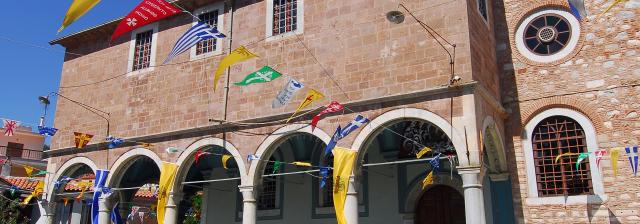
Sultan Mahmud II granted permission for the church to be built as requested by the inhabitants of Agiasos, on condition that the size of the building would not exceed that of the previous one. The church was 32.20 by 26.2 metres (105.6 ft × 86.0 ft). This three-aisle basilica had three apses and three Lord's Tables; the one on the right was dedicated to Saint Charalampus, and the one on the left to Saint Nicholas.
Almost all of the glebes had to be sold in order to finance the reconstruction work of the Church. In 1816 a second fund-raiser was held among the Christians in the towns and villages of Aeolis, in order to finance the completion of the interior decoration work. The construction of the iconostasis, the throne and pulpit by fine craftsmen lasted twenty years.
The church of Panayia is a true palace of faith. The offerings are treasures of priceless worth. Icons from Byzantine and Post-Byzantine era adorning the church, create an impression that one is in a place of divine Byzantine beauty.
Taxiarchis in mantamados
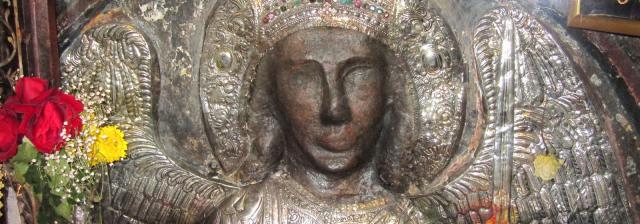
The monastery’s original church was built prior to the 18th century, but was completely reconstructed in 1879. According to legend, the relief icon of the Archangel Michael was moulded from clay and blood. The church contains the prelatic vestment of the martyred Ecumenical Patriarch Gregory V, a national and ecclesiastical relic.
The convent of Saints Raphael, Nicholas and Irene
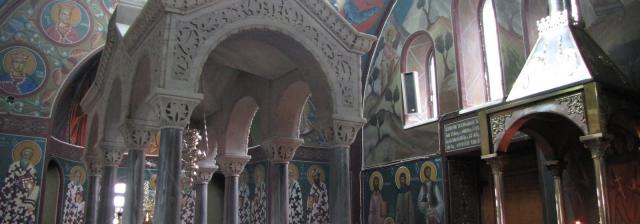
Founded in 1963, the convent was built on the site of a Byzantine monastery that was destroyed by Ottoman soldiers in 1463. It is especially renowned and receives thousands of pilgrims who come to the island solely to visit it and seek the blessing of the Saints. The abbess Eugenia Kleidara, the author of many religious books, and the 40 nuns who comprise the convent’s population are responsible for the convent’s communication and fine reputation.
Pithari Monastery
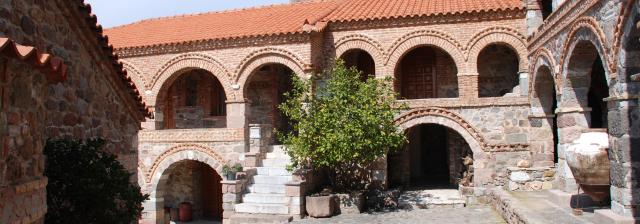
There are two versions regarding the founding of this monastery. According to one, it was a Byzantine monastery that was reestablished during the Ottoman Empire. The other maintains that it was founded in the 16th century.
Moni Leimonos
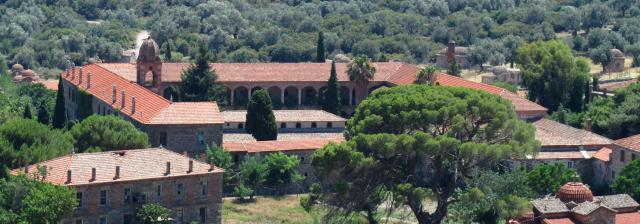
Tall and imposing, the Leimonos Monastery has the most extensive grounds of all the monasteries in Lesvos. It was from its founding year (1526) an important place of asceticism and worship, as well as a dynamic institution of systematized education. Remarkable frescos dating from the 16th and 17th centuries decorate the monastery’s interior.The prominent 16th scholar monk Pachomios Rousanos taught at the renowned Leimoniada School. Its collection of priceless relics and art objects, including Byzantine and Late Byzantine manuscripts and icons, documents, sacred vestments, liturgical vessels, holy relics, and folklore artifacts make this one of the wealthiest monasteries in the Aegean. Its library contains some 5,000 volumes.
Moni Ipsilou
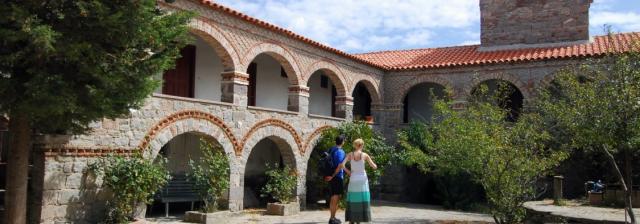
The monastery of Ypsilos, an active men's monastery, is dedicated to St John Theologos and is located in the west part of Lesbos, on the top of Mt Ordymnos, at a height of 634 m and at a distance of 81 km from Mytilene. Tradition places the foundation of the monastery in Byzantine years, before A.D. 800, and mentions it as "Monastery of Korakas", a name which was modified to "Monastery of Zisira" in the years of the Turkish occupation.From its Byzantine phase very little information has been saved and is believed that the monastery was abandoned and devastated in late Byzantine years. The monastery flourishes again in post-Byzantine years but it is destroyed by fire. The existing katholikon (main church) was built in 1832 and constitutes part of a monastic complex, which develops around the katholikon.In the monastery there is a particularly interesting vestry as well as a library with important manuscripts.
Panagia tis Petras
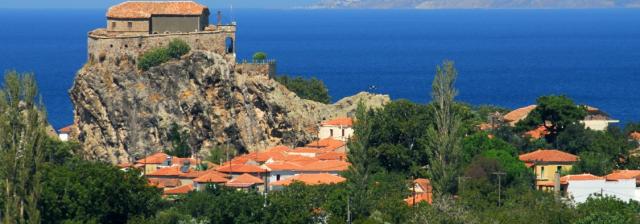
The center of the village is dominated by the rock on top of which is the Church of Panagia tis Glykofilousas (Our Lady of the Sweet Kisses). The rock is enormous, as imposing as those of Meteora in central Greece.At a height of 40 meters, it sprouts out of the tall, slender poplars as though wishing to dominate the level landscape around it. Climb the 114 steps to the top for a breath of Aeolian air and a view of the surrounding hills and blue waters.As prominent as a fortress, the church is a triple-aisled basilica with a narthex, a superb carved wooden bishop’s throne and a well with “holy water.” There are many legends surrounding the finding of the icon of the Virgin and the construction of the church. Ask the locals to tell you about it.

